Deciding to leave a teaching position is never easy, but sometimes it's necessary for personal growth and new opportunities. Whether you're moving to a different school, pursuing further education, or exploring another career path, communicating your decision with grace and professionalism is key. In this article, we'll guide you through writing an effective resignation letter that ensures a smooth transition and preserves those important relationships. So, let's dive in and explore the essential elements of a stellar resignation letter!
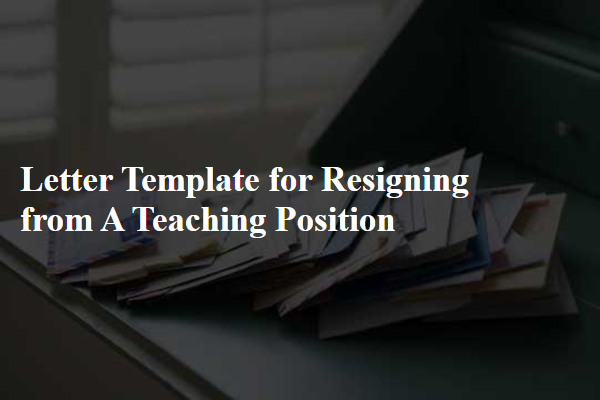
Current job position and school name
A teacher resigning from a position at Maplewood High School should consider the implications of leaving a role that involves shaping young minds and engaging with educational curriculum. Effective classroom management, lesson planning, and student assessment play crucial roles in day-to-day activities. Acknowledging the contributions to students' academic growth, including standardized test scores and personal development, underscores the significance of this teaching position. Transitioning responsibilities to ensure continued support for students and colleagues enhances the professional departure process.
Effective resignation date
In a formal resignation scenario, a teacher might inform their school administration about their intention to leave their post, typically with a notice period of two weeks to a month. The effective resignation date should ideally align with the school year's end, around late May or early June, ensuring a smooth transition for students and staff. Including gratitude for the experiences gained at the institution can foster positive relationships moving forward. It's recommended to mention specific achievements or contributions, such as organizing school events or enhancing student engagement, reflecting on the rewarding time spent in the educational environment.
Gratitude for the opportunities provided
Resigning from a teaching position often involves expressing gratitude for the opportunities provided by the institution. Teachers frequently reflect on the growth they have experienced during their tenure. This may encompass professional development through workshops, mentoring relationships with colleagues, and supportive leadership. Schools such as Lincoln High School often foster a collaborative environment, enhancing skills in lesson planning and classroom management. Additionally, teachers might mention specific programs or initiatives that have enriched their teaching practice, such as technology integration courses or community engagement projects. Highlighting the impact of student success stories can also convey appreciation for the rewarding experiences cultivated within the school community.
Reason for resignation (optional)
Resigning from a teaching position involves informing the school administration, colleagues, and students about the decision. A formal resignation letter typically states the intended last working day and acknowledges the experiences gained during the tenure. Clear communication is critical; therefore, specifying the reason for resignation, although optional, can foster understanding and goodwill. The document should reflect professionalism and gratitude, potentially referencing specific experiences, collaborations, or initiatives that positively impacted the school community and personal growth. Ensuring a smooth transition for the incoming teacher or team is advisable for maintaining continuity in student education.
Offer to assist in the transition process
In a seamless transition process, a departing teacher can provide invaluable assistance to both colleagues and students. Offering support during the handover period ensures that lesson plans, instructional materials, and classroom management techniques remain effective. Facilitating meetings with the incoming educator can prove beneficial, allowing for the sharing of insights regarding curriculum topics and student needs. Additionally, preparing a comprehensive guide on classroom routines, student behavior, and assessment strategies serves as a tremendous resource. Promoting a positive closure for students, such as organizing farewell activities or providing final assessments, helps maintain a stable learning environment. Ultimately, contributing to a smooth transition nurtures a sense of continuity in the educational experience at the school.
Letter Template For Resigning From A Teaching Position Samples
Letter template of resignation from a teaching position due to personal reasons

Letter template of resignation from a teaching position to pursue further education

Letter template of resignation from a teaching position for a new job opportunity
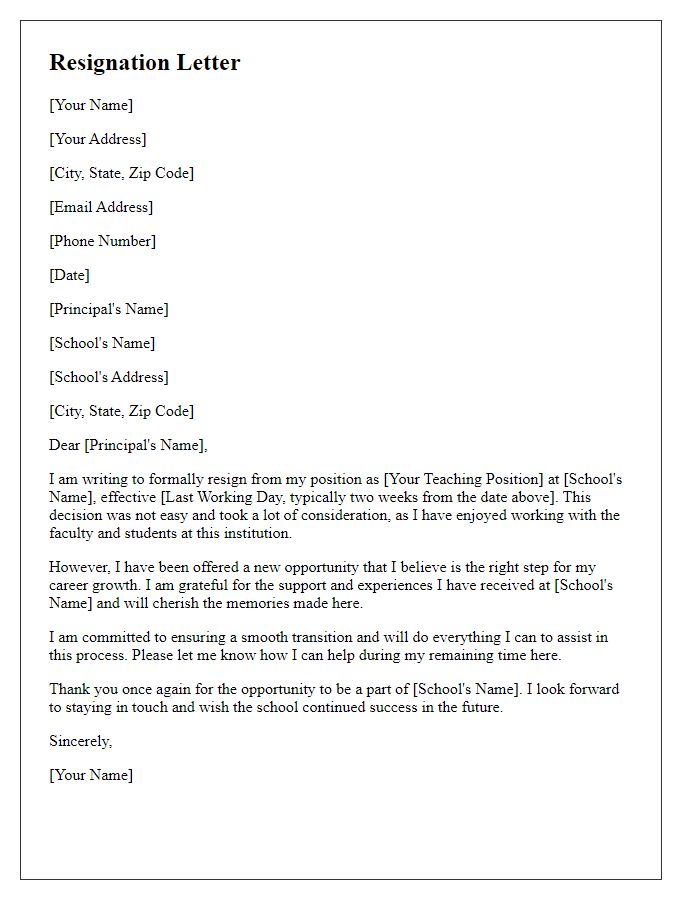
Letter template of resignation from a teaching position citing health reasons

Letter template of resignation from a teaching position for family commitments

Letter template of resignation from a teaching position for career advancement

Letter template of resignation from a teaching position to start a business

Letter template of resignation from a teaching position to take a sabbatical
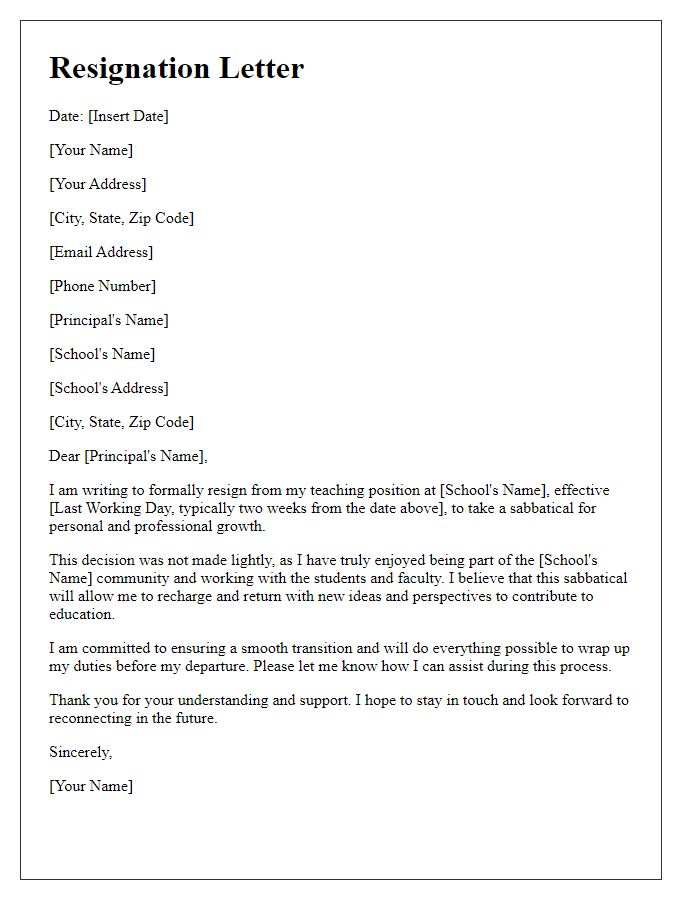

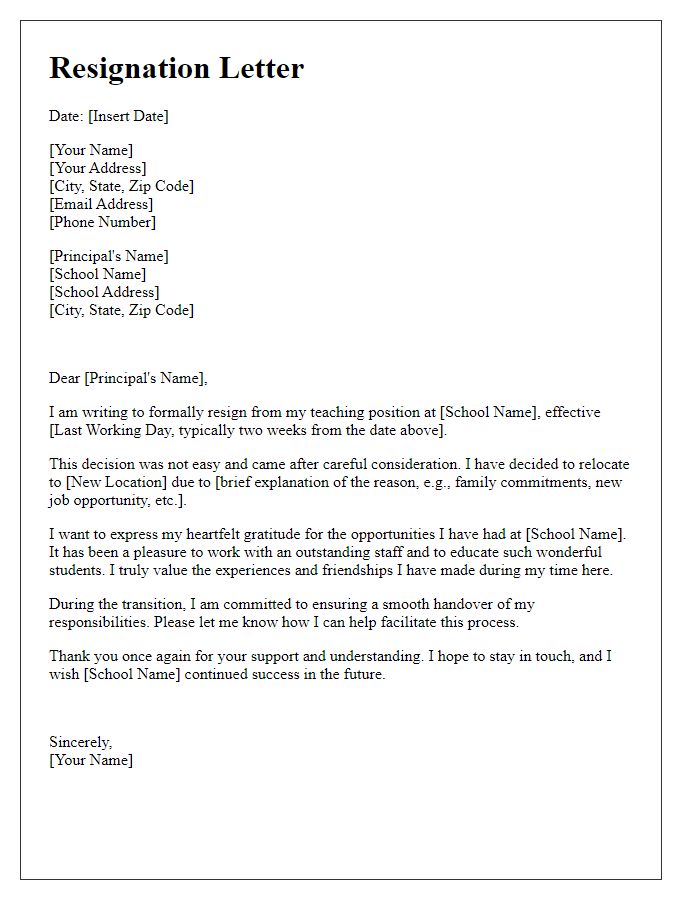


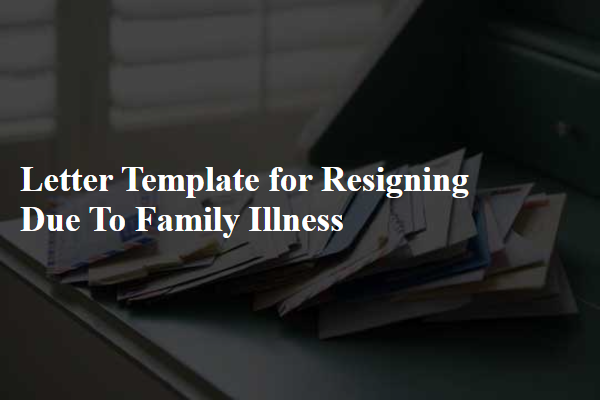
Comments